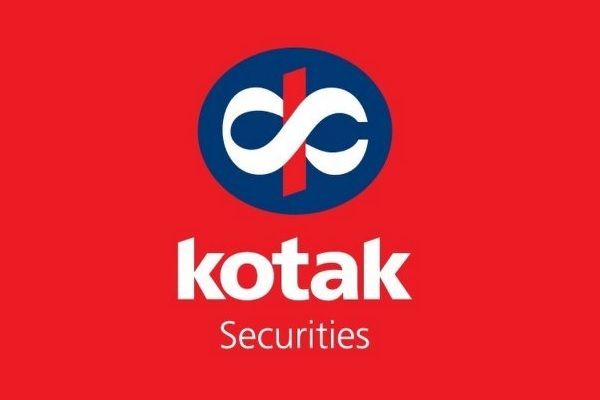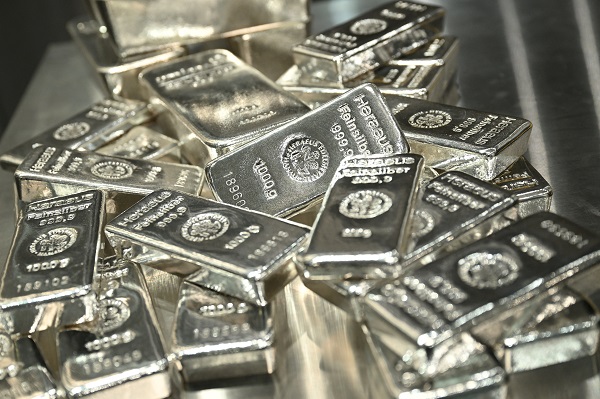Copper trading range for the day is 790.5-808.7 - Kedia Advisory

Gold
Gold prices surged by 1.33% to settle at 70636, buoyed by a combination of factors including bets on US interest rate cuts, speculative buying, and central bank purchases. This rally was further supported by robust US job growth in March, which exceeded expectations and signaled a strong economic performance, potentially delaying anticipated interest rate cuts by the Federal Reserve. Despite the Fed's efforts to curb inflation through rate hikes since March 2022, outsized price increases in the housing services sector remain a significant challenge, according to Chicago Federal Reserve President Austan Goolsbee. In India, physical gold demand remained subdued as soaring domestic prices deterred buyers, leading to discounts of up to $28 an ounce over official prices. Similarly, in China, despite steady premiums, demand was tempered compared to previous weeks. From a technical standpoint, the gold market experienced short covering, with open interest dropping by -0.38% while prices surged by 929 rupees. Currently, gold finds support at 69720, with a potential test of 68805 levels on the downside. Conversely, resistance is expected at 71125, and a breakout above this level could propel prices towards 71615. Traders should monitor these key levels closely amidst ongoing market volatility and developments in global economic indicators, particularly those influencing US monetary policy and inflationary trends.
Trading Ideas:
* Gold trading range for the day is 68805-71615.
* Gold gains supported by US interest rate cut bets, speculative buying and central bank purchases
* U.S. employers hired far more workers than expected March
* Global central bank gold reserves rose by 19t in February, marking the ninth consecutive month of growth
Silver
Silver prices surged by 1.1% yesterday, closing at 80863, primarily driven by escalating tensions in the Middle East and expectations of future monetary easing. However, the upside momentum was curbed as optimism was tempered by a robust US jobs report, which exceeded market forecasts. The addition of 303,000 jobs in March, coupled with a decline in the unemployment rate and strong wage growth, has diminished expectations of imminent interest rate cuts by the Federal Reserve. Consequently, market sentiments have shifted, with bets for a June rate reduction falling to approximately 55%. The persistence of outsized price increases in the housing services sector remains a significant challenge for the Federal Reserve's efforts to achieve its 2% inflation target, as highlighted by Chicago Federal Reserve President Austan Goolsbee. This factor, along with elevated interest rates, has dampened the appeal of non-yielding assets like silver. Despite short-term fluctuations, the Silver Institute remains optimistic about the metal's prospects in 2024, anticipating prices to potentially reach 10-year highs. Total global demand is expected to reach 1.2 billion ounces, marking the second-highest on record. From a technical standpoint, the silver market observed short covering, with a 3.13% drop in open interest to settle at 28123 contracts. Prices surged by 879 rupees. Support levels are identified at 79320, with potential downside testing towards 77775. Conversely, resistance is anticipated at 81720, with a breakout potentially leading to a test of 82575.
Trading Ideas:
* Silver trading range for the day is 77775-82575.
* Silver prices surged due to Middle East tensions and hopes for monetary easing.
* US economy added 303,000 jobs in March, surpassing market forecasts.
* Strong wage growth narrowed the corridor for the Fed to lower interest rates.
Crude oil
Crude oil prices surged by 2.26% to settle at 7284, driven by a myriad of factors including geopolitical tensions in the Middle East, concerns over tightening supply, and expectations of increased demand as global economies continue to improve. The escalation of tensions between Iran and Israel, coupled with ongoing Ukrainian drone attacks on Russian refineries, contributed to market jitters and amplified concerns about supply disruptions. Additionally, the decision by OPEC+ to maintain its oil supply policy unchanged further supported bullish sentiments in the market. On the supply side, data from the Energy Information Administration revealed a significant decline in US crude oil production in January, primarily attributed to adverse weather conditions impacting production in key states like Texas and North Dakota. Furthermore, US shipments of crude oil via rail saw a notable decrease in January, reflecting potential logistical challenges and constraints in the transportation of oil. Technically, the crude oil market experienced fresh buying momentum, with open interest surging by 24.83% while prices rose by 161 rupees. Presently, crude oil finds support at 7216, with a potential test of 7148 levels on the downside. Conversely, resistance is anticipated at 7324, and a breakout above this level could propel prices towards 7364. Traders should closely monitor geopolitical developments and supply dynamics as they continue to influence market sentiment and price movements in the crude oil market.
Trading Ideas:
* Crudeoil trading range for the day is 7148-7364.
* Crude oil prices rose due to geopolitical tensions in the Middle East, supply tightening concerns
* OPEC producer Iran vowed revenge against Israel for an attack that killed high-ranking Iranian military personnel.
* OPEC+ maintained their oil supply policy, pressuring some countries to increase output cuts.
Natural gas
Natural gas prices saw a notable uptick yesterday, rising by 1.34% to settle at 151.5, driven by expectations of low output in the coming weeks as drillers continue to reduce gas rigs. Despite forecasts indicating milder weather and lower demand, prices surged, indicating resilience in the market. This resilience was further supported by reduced gas withdrawals from storage, slightly below market expectations, and despite negative spot power and gas prices in certain regions. Power outages stemming from a 4.8-magnitude earthquake near New York City also impacted demand temporarily, reflecting the interconnectedness of various factors influencing gas consumption. Notably, gas output in the Lower 48 U.S. states has declined to an average of 99.1 bcfd in April, down from March levels and reflecting a broader trend of decreasing production since December 2023's record high. Additionally, meteorologists project cooler-than-normal weather across the Lower 48 through April 7, followed by a shift to warmer conditions from April 8-20. From a technical standpoint, the natural gas market observed short covering, evidenced by a 2.19% drop in open interest to settle at 56023 contracts, while prices rose by 2 rupees. Support levels are identified at 148.5, with potential downside testing towards 145.4. Conversely, resistance is anticipated at 153.6, with a potential breakout leading to a test of 155.6. Despite the short-term fluctuations, the overall trend indicates market participants' focus on supply dynamics and weather forecasts as key drivers of natural gas prices.
Trading Ideas:
* Naturalgas trading range for the day is 145.4-155.6.
* Natural gas prices increased despite forecasts for milder weather and lower demand.
* US utilities pulled 37 Bcf of gas from storage, compared to market expectations of a 38 bcf draw.
* Power outages temporarily reduced gas demand as generators don't burn as much fuel.
Copper
Copper prices experienced a slight decline of -0.22% yesterday, settling at 801.4, influenced by the LME cash copper contract trading at a significant discount against the three-month contract, indicating ample near-term supply. This discount, the largest since at least 1982, underscores the surplus of inventories in the market. Despite initial optimism driven by better-than-expected manufacturing activity data from China and hopes for rate cuts in the US and Europe earlier in the week, concerns over supply disruptions in major copper-producing regions persisted. Logistical issues in Congo and droughts in Zambia have hampered production, prompting Chinese smelters to contemplate a joint reduction in output to bolster margins. Additionally, seasonal factors such as the slowdown in Chinese copper factories during the northern hemisphere summer months have contributed to market dynamics. The Yanghsan copper premium witnessed a sharp decline, reflecting lower demand for physical copper from factories. The International Copper Study Group (ICSG) reported an 84,000 metric ton surplus in the global refined copper market in January, compared to a 27,000 metric ton surplus in December. Despite this surplus, disruptions and logistical challenges have kept the market on edge. From a technical perspective, the copper market observed long liquidation, with a 1.01% drop in open interest to settle at 4528 contracts, while prices declined by -1.75 rupees. Support levels are identified at 796, with potential downside testing towards 790.5, while resistance is anticipated at 805.1, with a potential breakout leading to a test of 808.7.
Trading Ideas:
* Copper trading range for the day is 790.5-808.7.
* Copper dropped as discount for LME cash over 3-month copper at record high
* Chinese copper factories typically slow down over the northern hemisphere summer months.
* The global refined copper market showed an 84,000 metric tons surplus in January
Zinc
Zinc prices experienced a slight decline of -0.45%, settling at 232.6, as the US dollar strengthened following better-than-expected job growth in March. This bolstered speculation that anticipated interest rate cuts by the US Federal Reserve might be delayed, exerting downward pressure on commodity prices including zinc. In Japan, Toho Zinc Co Ltd announced plans to reduce refined zinc production by 4.3% in the first half of the 2024/25 financial year, reflecting ongoing challenges within the industry. Meanwhile, zinc inventories in both LME and SHFE warehouses continued to climb, leading to a widening discount of the LME cash zinc contract to the three-month contract, reaching levels not seen since November 1991. In China, a slowdown in infrastructure and property projects due to insufficient capital dampened demand for zinc in the first quarter of 2024. Despite this, refined zinc production in China is expected to increase slightly in March compared to the previous month, driven by extended production days and the recovery of some companies in Sichuan. Data from the International Lead and Zinc Study Group (ILZSG) revealed a shift in the global zinc market from a deficit of 46,800 tons in December to a surplus of 58,700 tons in January. Technically, the zinc market witnessed long liquidation, with a drop in open interest by -0.21% while prices declined by -1.05 rupees. Presently, zinc finds support at 231.1, with a potential test of 229.4 levels on the downside. Conversely, resistance is likely at 234.4, and a breakout above this level could lead to further testing at 236.
Trading Ideas:
* Zinc trading range for the day is 229.4-236.
* Zinc dropped as the U.S. dollar rose after March job growth beat expectations
* Zinc inventories in LME and SHFE warehouses have been rising
* Japan's Toho Zinc sees 4.3% drop in H1 zinc output y/y
Aluminium
Aluminium prices demonstrated resilience yesterday, climbing by 0.49% to settle at 223.95. This uptick was bolstered by the higher premiums Japanese buyers were willing to pay, boosting market sentiment. Additionally, stronger-than-expected economic data from China countered concerns of waning demand from the world's top consumer. Notably, U.S. manufacturing expanded for the first time in 1-1/2 years in March, contributing to the positive momentum in aluminium prices. Macroeconomic factors also played a significant role, with growing expectations of an interest rate cut by the European Central Bank and escalating tensions between Russia and Ukraine, lifting the commodity market overall. Despite expectations of increased production in May, uncertainties loom due to the drought situation in Yunnan, which may impact supply dynamics. However, the traditional peak season and continuous policy efforts to boost demand have bolstered operating rates across various processing sectors. Fundamentally, China's aluminium output in February showed a 7.81% year-on-year increase, with domestic smelters maintaining steady operations. Although an aluminium smelter in Inner Mongolia faced production disruptions due to a power outage, no other significant suspensions or resumptions were reported. Technically, the aluminium market observed fresh buying activity, with a 1.69% increase in open interest to settle at 3722 contracts, while prices rose by 1.1 rupees. Support levels are identified at 221.9, with potential downside testing towards 219.9, while resistance is anticipated at 225.4, with a potential breakout leading to a test of 226.9.
Trading Ideas:
* Aluminium trading range for the day is 219.9-226.9.
* Aluminium gains as higher premiums Japanese buyers having to pay boosted sentiment.
* Support also seen amid stronger-than-expected economic data from China
* U.S. manufacturing expanded for the first time in 1-1/2 years in March.
Cotton
Cottoncandy prices experienced a decline of -0.45% yesterday, settling at 61580, as market sentiments were influenced by the International Cotton Advisory Committee's (ICAC) projections for the 2024-25 season. The ICAC forecasts an increase in cotton-producing area, production, consumption, and trade, with global cotton trade expected to grow by nearly 4%. Additionally, the Cotton Association of India (CAI) and the Cotton Corporation of India (CCI) revised their cotton production estimates upwards for the current season, reflecting ample supply expectations. However, despite the positive outlook for supply, ICE prices dropped amid lower demand from mills and increased supply expectations for the natural fiber. For the 2024/25 marketing year, India's cotton production is estimated to decrease by 2% due to farmers shifting acreage to higher-return crops. Conversely, mill consumption is expected to increase as yarn and textile demand improve in major international markets. Import estimates for India have also increased due to the recension of import duties on extra-long staple (ELS) cotton. In China, cotton imports for the 2024/25 marketing year are forecasted to increase on higher domestic and international demand for textile and apparel products. Despite stable planted area in Xinjiang, overall production is forecasted to decline due to decreasing planted area in other regions. From a technical standpoint, Cottoncandy market observed fresh selling, with a 1.13% increase in open interest to settle at 448 contracts, while prices declined by -280 rupees. Support levels are identified at 61400, with potential downside testing towards 61230, while resistance is anticipated at 61820, with a potential breakout leading to a test of 62070.
Trading Ideas:
* Cottoncandy trading range for the day is 61230-62070.
* Cotton dropped as ICAC with anticipated increases in production for 2024-25.
* The ICAC's projections for 2024-25 suggest that the cotton-producing area may increase by 3 per cent from the 2023-24 acreage
* For 2024/25 China’s cotton imports are forecast at 2.4 million metric tons
* In Rajkot, a major spot market, the price ended at 28976.75 Rupees dropped by -0.45 percent.
Turmeric
Turmeric prices experienced a marginal uptick of 0.07%, settling at 17398, driven by below-normal supplies and active festive demand, maintaining a positive bias in trading. However, the market anticipates new arrivals from the Marathwada region in Maharashtra, with notable increases reported in Nanded, Nizamabad, and Erode. These arrivals, especially in Erode, were substantially higher compared to the previous week, potentially offsetting some of the supply constraints. Despite the positive demand outlook, concerns linger regarding turmeric production, with the Ministry of Agriculture and Farmers' Welfare estimating a decline in production for the 2023-24 period compared to the previous year. Additionally, demand destruction has been noted as prices surged, particularly in turmeric-growing regions like Sangli, Basmat, and Hingoli. On the export front, turmeric exports saw a slight decline during April-January 2024 compared to the previous year, with January 2024 witnessing a notable drop in exports compared to both December 2023 and January 2023. Technically, the turmeric market witnessed fresh buying momentum, with open interest increasing by 10.77% while prices rose by 12 rupees. Currently, turmeric finds support at 17154, with a potential test of 16908 levels on the downside. Conversely, resistance is anticipated at 17592, and a breakout above this level could lead to further testing at 17784. Traders should monitor supply dynamics, demand trends, and technical indicators closely for insights into future price movements in the turmeric market.
Trading Ideas:
* Turmeric trading range for the day is 16908-17784.
* Turmeric gains amid below normal supplies and active festive demand
* New crop supply has increased by over 25% in parts of Tamil Nadu, Telangana, and Andhra Pradesh
* The Ministry of Agriculture first advance estimate for turmeric production in 2023-24 is estimated at 10.74 lakh tonnes
* In Nizamabad, a major spot market, the price ended at 16576.8 Rupees gained by 1.1 percent.
Jeera
Jeera prices exhibited a modest increase of 0.45% yesterday, settling at 23635, driven by the possibility of further arrivals pressure in the market. Despite this pressure, downside movement was limited as global buyers continued to prefer Indian jeera amidst tightening global supplies. The market observed a daily arrival of 10000 to 12000 bags in Rajkot Mandi, surpassing current demand levels. New arrivals have been reported in Gujarat and Rajasthan, leading to an increase in production estimates, with Gujarat expected to achieve a record production of 4.08 lakh tonnes. The surge in production is attributed to a 30-35% increase in sowing area in Gujarat and a similar trend in Rajasthan. Favorable weather conditions in major cumin-producing regions have also contributed to the bumper crop. However, despite the surge in production and exports, jeera exports during Apr-Jan 2024 dropped by 25.33% compared to the same period in 2023. Nonetheless, January 2024 saw a notable rise in exports, up by 53.99% compared to January 2023. In Unjha, a major spot market, prices ended at 24913.7 Rupees, gaining 0.33%. Technically, the jeera market witnessed fresh buying, with a significant increase in open interest by 11.59% to settle at 1878 contracts, while prices surged by 105 rupees. Support levels are identified at 23270, with potential downside testing towards 22900, while resistance is anticipated at 23890, with a potential breakout leading to a test of 24140. Overall, while production and exports have surged, market dynamics are influenced by both domestic and global factors, with technical indicators suggesting a bullish outlook amidst recent buying activity.
Trading Ideas:
* Jeera trading range for the day is 22900-24140.
* Jeera settled flat as there is a possibility of further increase in arrivals pressure.
* There will be a huge increase in cumin exports, which will reach about 14-15 thousand tonnes in February 2024.
* New arrivals have started in Gujarat since last 20-25 days and new arrivals have started in Rajasthan also since last 15 days.
* In Unjha, a major spot market, the price ended at 24913.7 Rupees gained by 0.33 percent.
Views express by all participants are for information & academic purpose only. Kindly read disclaimer before referring below views. Click Here For Disclaimer

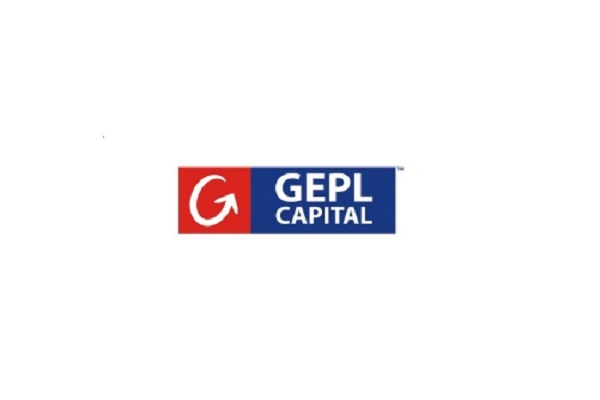

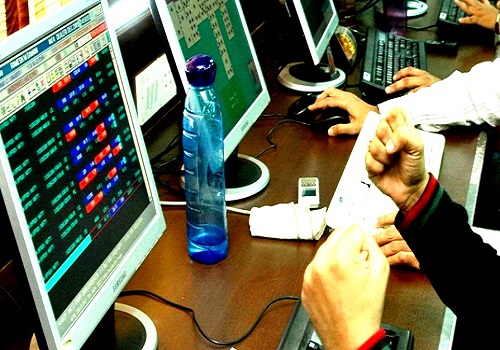


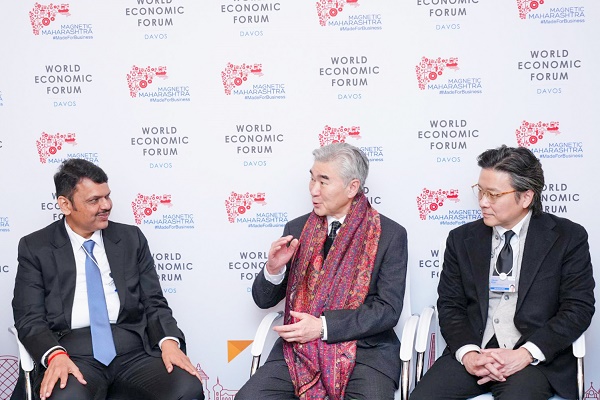
.jpg)


More News

Commodity Intraday Technical Outlook 12th August 2025 - Geojit Financial Services Ltd









